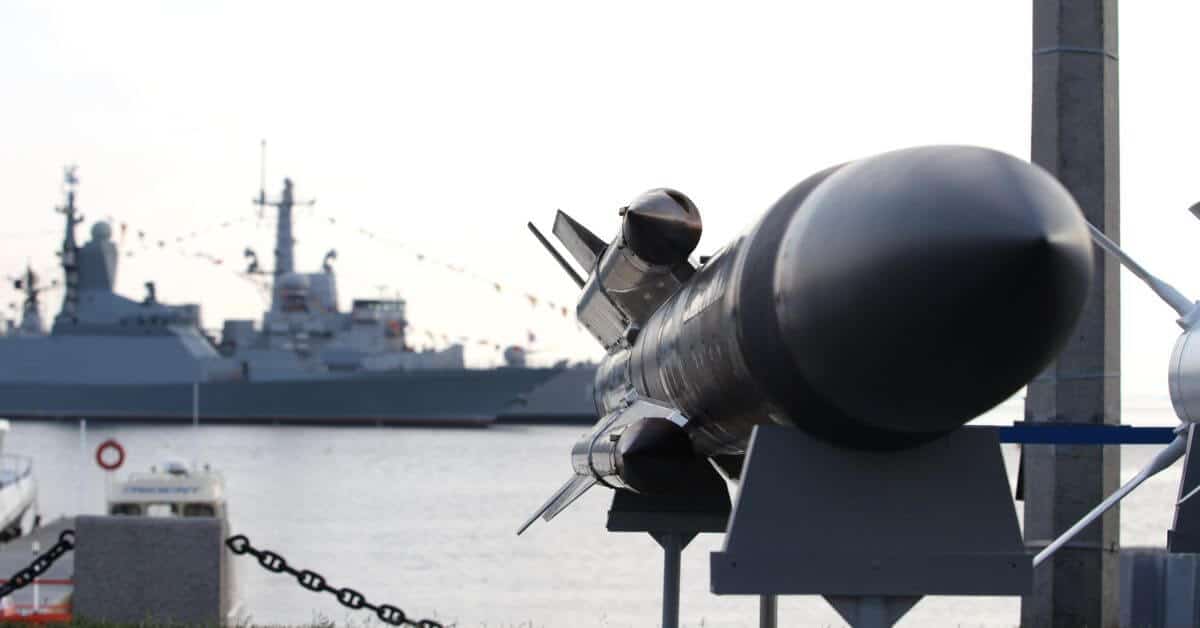U.S. Gathers Affordable Anti-Ship Weapons To Counter China In Indo Pacific Region
How the US is Building a Powerful and Cost-Effective Anti-Ship Weapon Arsenal to Counter China

The United States is building a large and affordable set of weapons to protect itself from China’s growing military power in the Indo-Pacific region. Experts say this strategy is a direct answer to China’s big stockpile of ships and missiles. Some of these missiles are made to specifically attack enemy ships.
The US wants to stop China from blocking the movement of US Navy ships in important areas like the Western Pacific and the First Island Chain. This area is vital for keeping global shipping routes open and free from control by any single country.
One of the most important new weapons the US is developing is called the QUICKSINK bomb. This is a low-cost weapon that uses GPS technology to guide itself and has a special seeker system that can follow moving targets, like enemy ships. This makes it very useful for the US military.
Recently, the US Air Force tested this weapon in the Gulf of Mexico. During the test, they used a B-2 stealth bomber to drop a QUICKSINK bomb, sinking a target ship. Boeing makes this bomb, and its seeker is designed by BAE Systems. The bomb can be used with the existing Joint Direct Attack Munition (JDAM) kits, turning regular bombs into smart, guided weapons.
Although China has many anti-ship missiles, the US hopes that making more QUICKSINK bombs will help balance the power. This will make China’s warships more vulnerable than they have been in years. The US Indo-Pacific Command is working hard to get a lot of these weapons, though the exact numbers are not clear.
The United States has also placed other anti-ship weapons in key spots across the region. In April, during military exercises in the Philippines, the US Army used its new Typhon missile batteries. These batteries can launch two powerful types of missiles: the SM-6 and the Tomahawk. Both missiles are based on older designs, making them easier and faster to produce. This helps the US and its allies catch up with China in the regional missile race.
While military leaders have not said exactly how many anti-ship missiles are in the Indo-Pacific, government records show that the US plans to buy more than 800 SM-6 missiles over the next five years. There are also thousands of Tomahawks and hundreds of thousands of JDAMs already in the US stockpile. These missiles will be placed in strategic locations like the Philippines, allowing the US to target areas in the South China Sea.
China claims control over 90% of the South China Sea, but several Southeast Asian countries, including Taiwan, disagree with these claims. They argue that these waters are international, and no one country should control them.
Military experts say that the US strategy will help balance the power in the region. They point to other examples around the world, like the Red Sea, where low-tech anti-ship missiles have caused major problems for shipping.
Even though neither the US Pentagon nor China’s Ministry of Defense has commented on these new developments, analysts believe that the US’s new, cheaper, and more mobile anti-ship weapons will make it harder for China to control the seas. These weapons will complicate the operations of China’s navy and make it more difficult for them to move freely.
